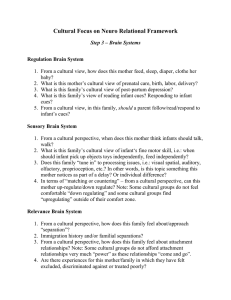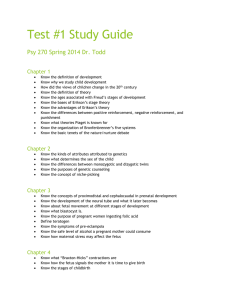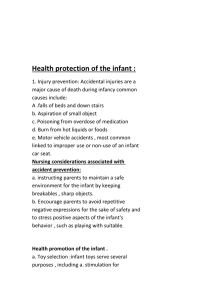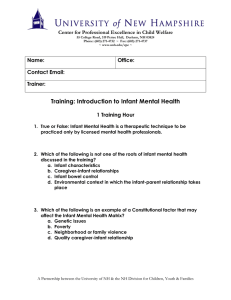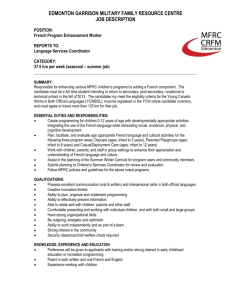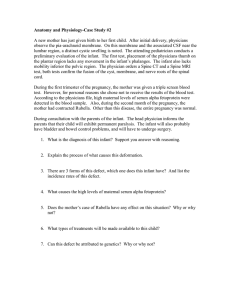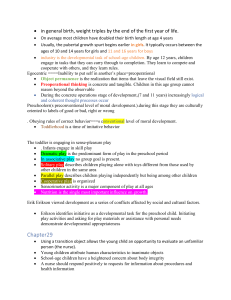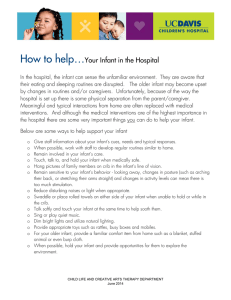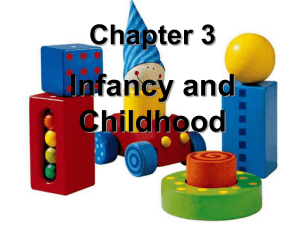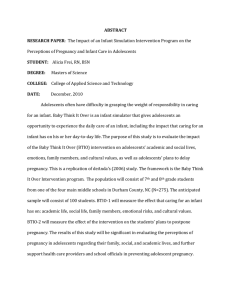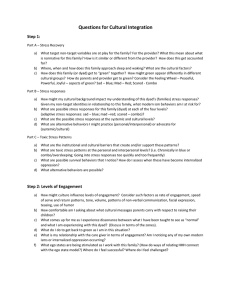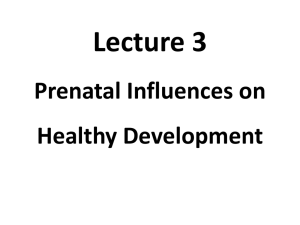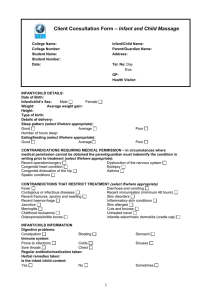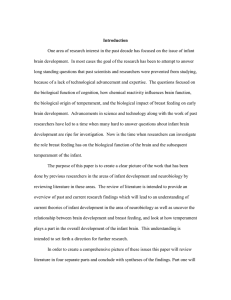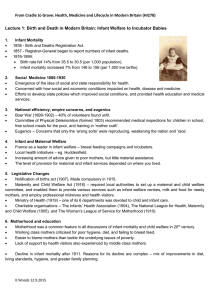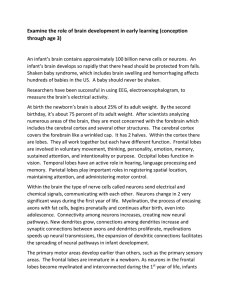Infant Brain Development Competency Assessment To whom do we
advertisement
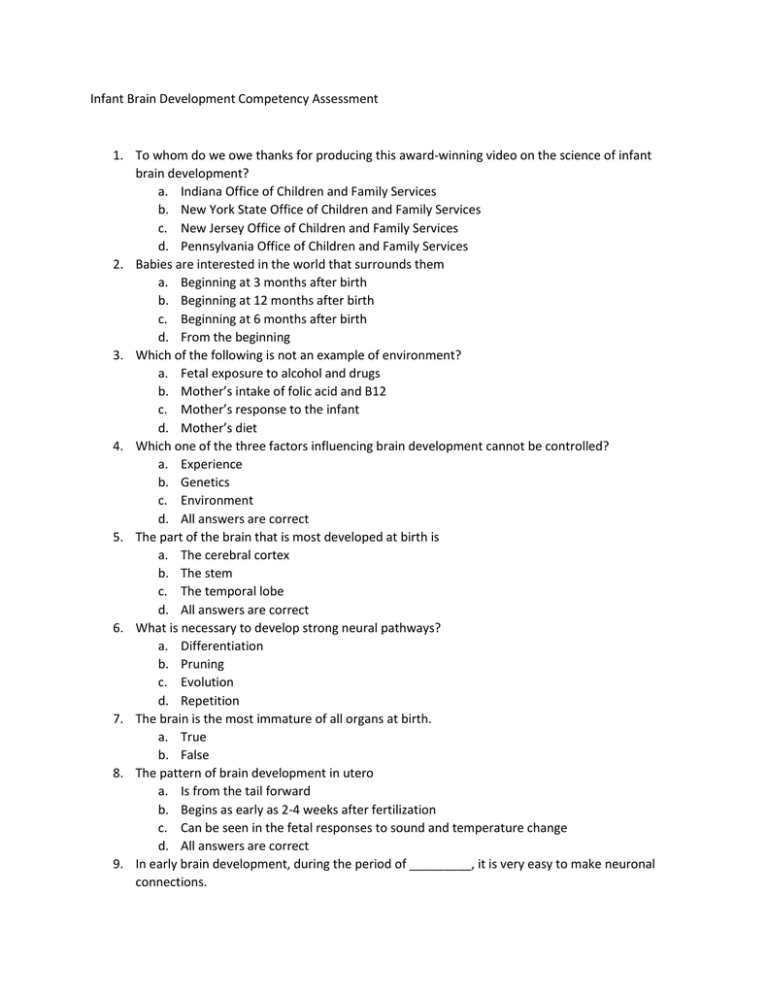
Infant Brain Development Competency Assessment 1. To whom do we owe thanks for producing this award-winning video on the science of infant brain development? a. Indiana Office of Children and Family Services b. New York State Office of Children and Family Services c. New Jersey Office of Children and Family Services d. Pennsylvania Office of Children and Family Services 2. Babies are interested in the world that surrounds them a. Beginning at 3 months after birth b. Beginning at 12 months after birth c. Beginning at 6 months after birth d. From the beginning 3. Which of the following is not an example of environment? a. Fetal exposure to alcohol and drugs b. Mother’s intake of folic acid and B12 c. Mother’s response to the infant d. Mother’s diet 4. Which one of the three factors influencing brain development cannot be controlled? a. Experience b. Genetics c. Environment d. All answers are correct 5. The part of the brain that is most developed at birth is a. The cerebral cortex b. The stem c. The temporal lobe d. All answers are correct 6. What is necessary to develop strong neural pathways? a. Differentiation b. Pruning c. Evolution d. Repetition 7. The brain is the most immature of all organs at birth. a. True b. False 8. The pattern of brain development in utero a. Is from the tail forward b. Begins as early as 2-4 weeks after fertilization c. Can be seen in the fetal responses to sound and temperature change d. All answers are correct 9. In early brain development, during the period of _________, it is very easy to make neuronal connections. 10. 11. 12. 13. 14. 15. a. Retention b. Exuberance c. Differentiation d. Explosion If the window of opportunity is not accessed, the connections might not be developed and may later be pruned. a. True b. False _______ is the dense, fatty material covering axons of neurons. a. Dendrite b. Axon c. Myelin d. Synapse The greatest brain development occurs a. From birth to 3 years b. During the first 6 months of life c. In the prenatal period d. During adolescence The best toy for infant brain development is a. A warm response from an adult b. A rattle c. A musical tape like Baby Einstein d. An expensive electronic toy like an iPad Areas of the brain that are primed to form new synaptic connections are those involved with problem solving, cognition, and a. Sensory and vision b. Emotional centers c. Vision d. Hearing Neural pathways become faster, more stable, and more complex with repeated use. a. True b. False
